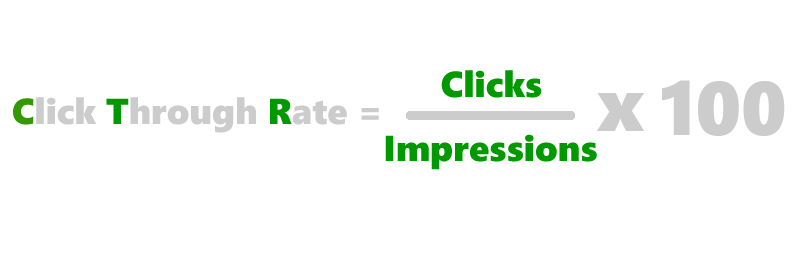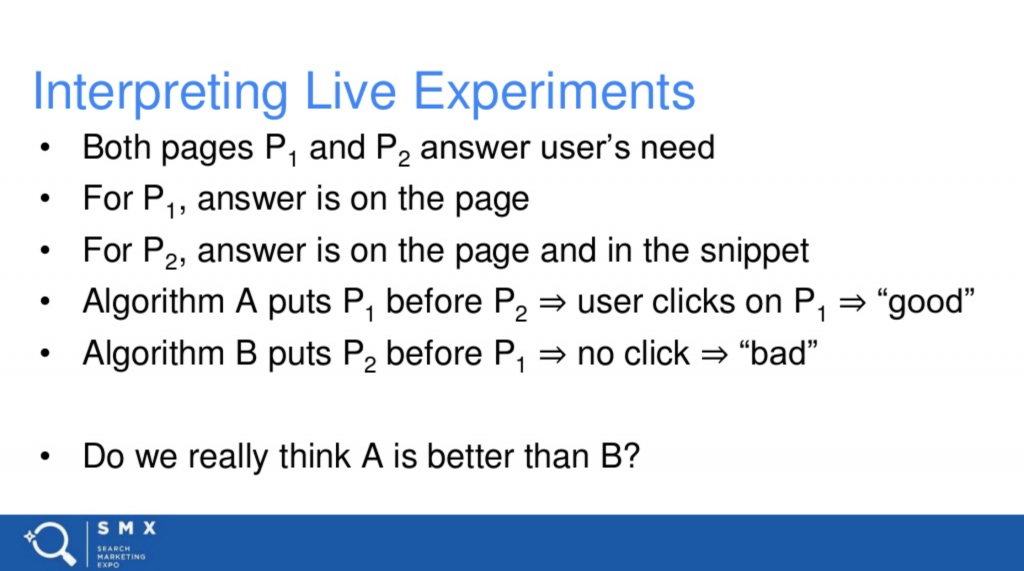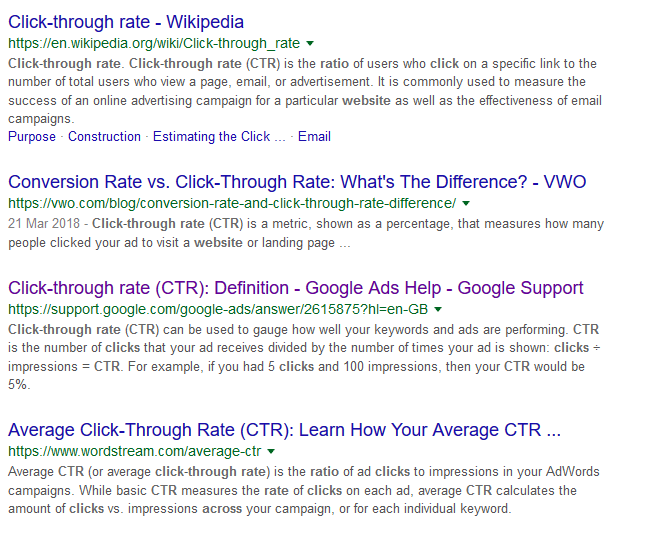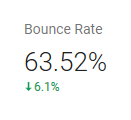User signals are measurable patterns of behaviour by your website visitors. They can be used by Google as a ranking signal which are factors that influence where your website may be ranked in search results.
Some are also available in your web traffic Google analytics data as Key Performance Indicators of how your website is being viewed and used by visitors. Viewing this data can help you with identifying the following:
- Problem areas of your website.
- Most popular areas of your website.
- Top exit pages.
- Path through your website.

There is a lot of user behaviour data available in Google analytics but the most important, from an SEO point of view, are Bounce Rate and Click Through Rate – CTR.
Bounce rate
Bounce rate measures the number of people that click on the link to your website in the search engine result pages (SERPs) and leave immediately without visiting another page.
A high bounce rate indicates that your website is not matching the user intent from the search results.
In Google Analytics, bounce rate is calculated as the percentage of all sessions on your site in which users viewed only a single page and triggered only a single request to the Analytics server.
These single-page sessions have a session duration of 0 seconds since there are no subsequent hits after the first one that would let Analytics calculate the length of the session.
There are no hard and fast rules governing when bounce rate becomes a concern. For our clients’ websites, we get concerned if the bounce rate gets above about 85%, however this is sometimes tempered by the type of page and website.
The success of a portal or e-commerce type website depends on visiting other pages such as product pages etc so a high bounce rate is a problem. If you run a single page website like a blog then people may only visit one page but spend some time reading that page so a high bounce rate may not be such a concern.
In public statements Google is lukewarm about its importance as a ranking signal.
Gary Illyes from Google said on Twitter that bounce rate is simply not a good ranking signal for Google to use in their ranking algorithms – https://www.seroundtable.com/google-bounce-rate-signal-23671.html
He did not, however, dismiss it completely.
We recommend setting a base-line bounce rate and seek to improve the trend over time by making site improvements and delivering a better user experience that matches what people are searching for and what they get from your website.
Click Through Rate
Click Through Rate (CTR) measures the number of clicks on a SERP (search engine results page) link compared to how often the link appears in search results – Impressions. It is usually expressed as a percentage.
CTR = (Clicks / Impressions) * 100
Google have confirmed that the algorithm may give a boost to links that attract a higher click through rate.
The more people click on your result (and not on the other snippets in the SERPs), the more Google will think your result does indeed fit the user’s search intent. A high CTR will therefore result in higher rankings, as Google wants to show the best result first. See the 4th bullet point from a presentation by a Google Engineer, Paul Haahr:

See the all the slides here: How Google ranking works a ranking engineers perspective
There are two obvious page tags that influence CTR:
- Title Tag
- Meta Description
These are tags that do not display obviously on a web page but are present in the code. The search engines Google and Bing usually look at these tags to construct the snippet that appears in SERPS.
- The clickable title is normally taken from the Title Tag
- The excerpt is normally taken from the Meta Description
The title tag normally supplies the text for the Browser tab and is indexed by Google for keywords.

We say ‘normally’ as Google does not automatically grab this text for SERPs.
If the text is too long (the latest recommendations are 50–60 characters for the Title Tag and 50 to 300 characters for the Meta Description), badly written or doesn’t match the content or perceived theme of the website, Google may attempt to come up with its own version.
It therefore is important for SEO purposes to write these two tags properly. The text needs to be compelling and encourage the searcher to click on the link to your website. Once there, your content needs to be relevant to the search and compelling enough to encourage the visitor to stay and explore further so it doesn’t become a bounce and undo the achievement of getting them there in the first place.
We may be going out on a limb slightly, but there is also an additional factor relating to E-A-T signals i.e. Expertise, Authoritativeness, Trustworthiness. These are part of the guidelines used by Google’s human evaluators to rank and evaluate pages in search results (see EAT and YMYL: New Google Search Guidelines Acronyms of Quality Content for more information).
There are other important performance indicators such as Pages per Session, Average Session Duration etc that are good indicators of user experience that you should seek to improve over time. They may or may not be used as ranking factors for Google. We will cover this in future blog posts.
Please get in touch if you have any further questions about our SEO services and contact us.







